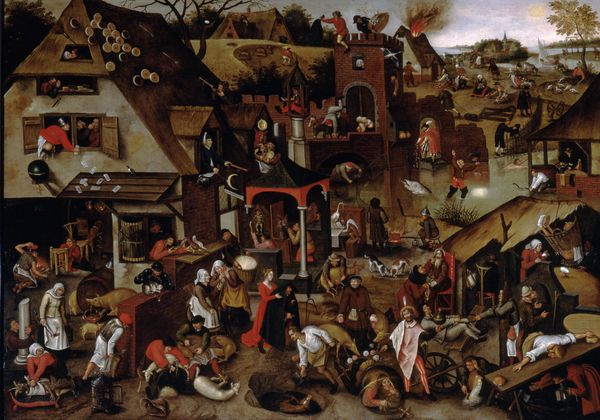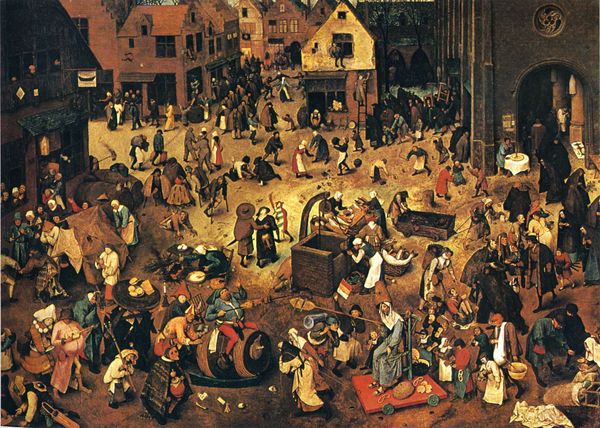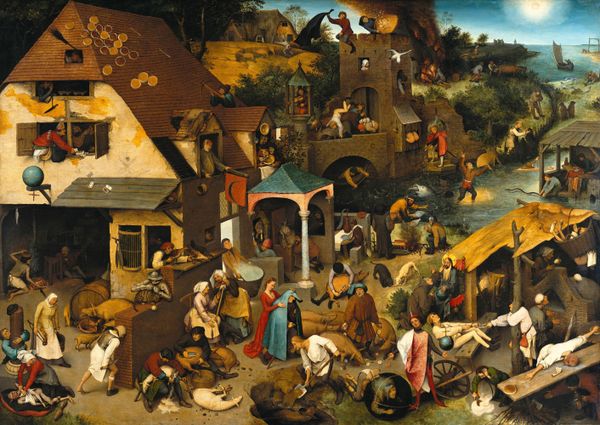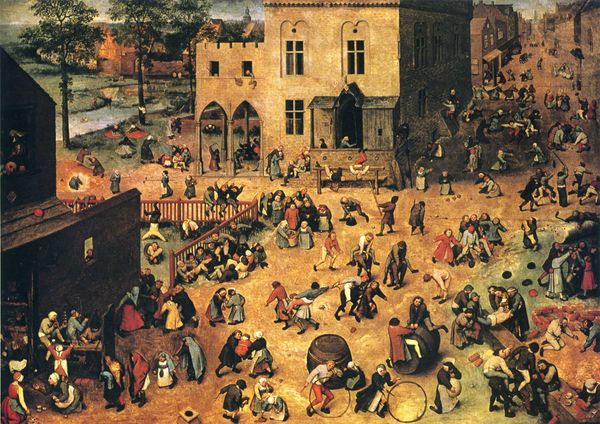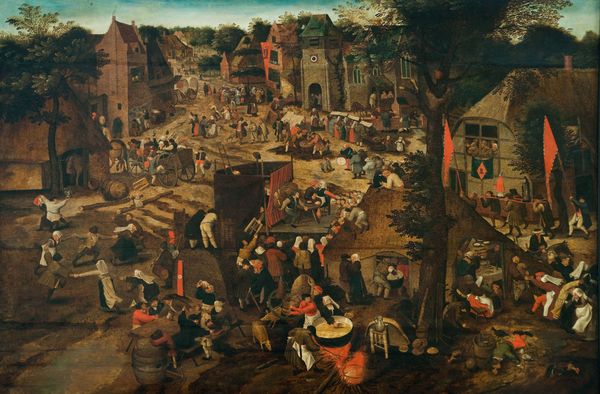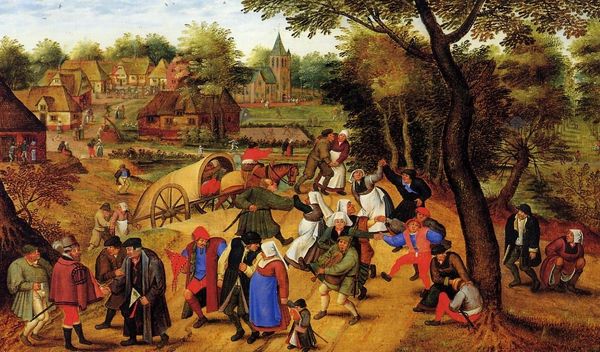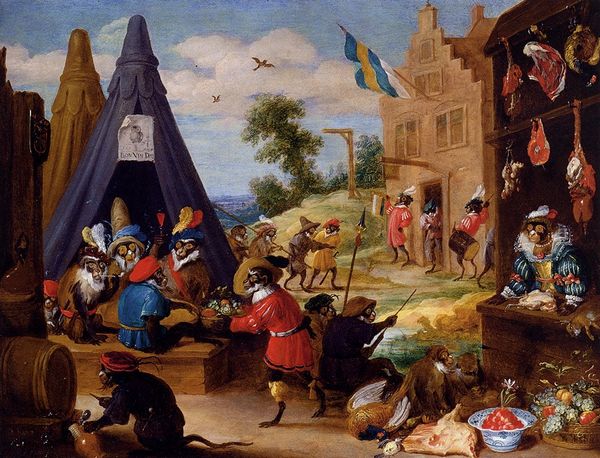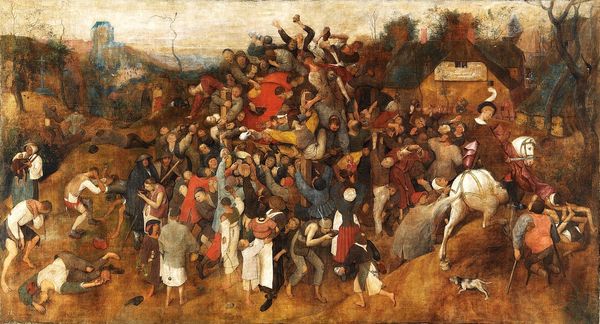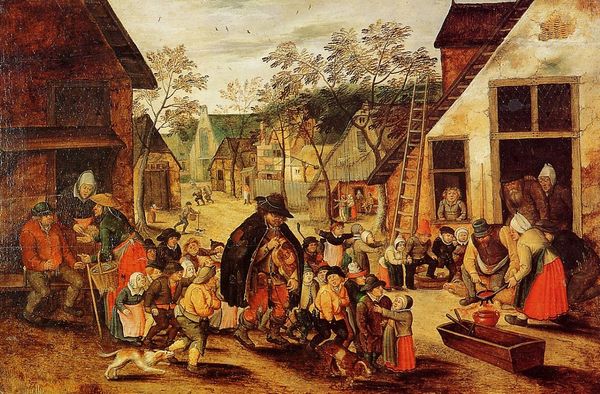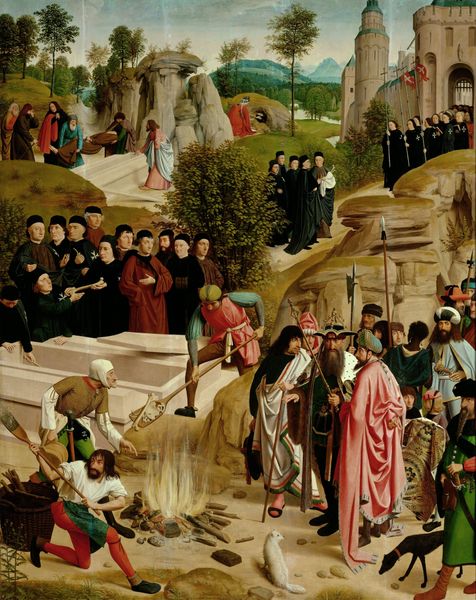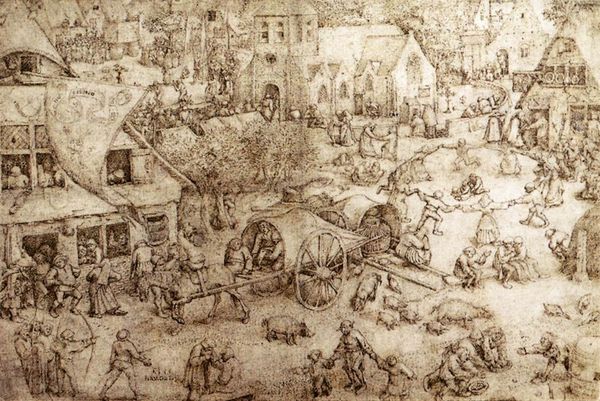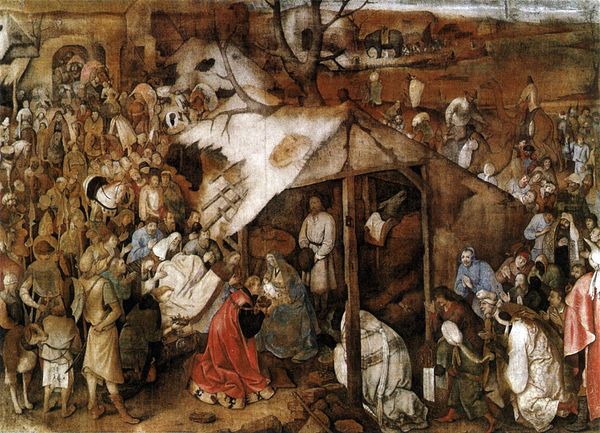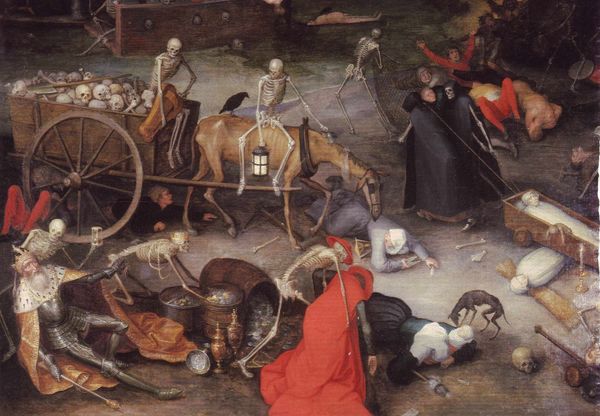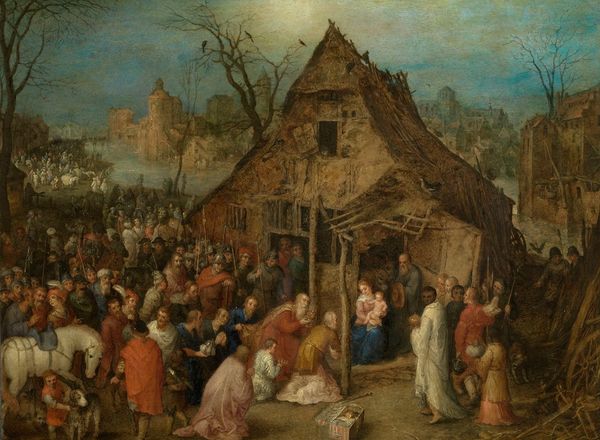
painting, oil-paint
#
narrative-art
#
painting
#
oil-paint
#
landscape
#
figuration
#
oil painting
#
genre-painting
#
history-painting
#
northern-renaissance
Copyright: Public domain
Editor: This oil painting is called "Sprichworte" or "Netherlandish Proverbs", painted by Pieter Brueghel the Younger. There is so much going on; it feels very chaotic but also really captivating with all its detailed elements. What jumps out at you? Curator: Observe how Brueghel constructs this world. The eye struggles to find a vanishing point. There are simultaneous narratives occurring throughout the pictorial space. Each of these tells a fragment of a well-known proverb of the time. Note how color creates dynamism within the static scene. The bright reds and blues punctuate the muted earth tones, creating areas of visual intensity. Does this fracturing serve a rhetorical purpose? Editor: Rhetorical? What do you mean? Curator: Consider that the canvas’s visual discord mirrors the follies represented. Does this suggest that the visual form is inextricable from the moral content, or that the structure itself holds meaning? How might contemporary critical theory consider such interplays of meaning-making through formal construction? Editor: That's a fascinating way to look at it! I was initially just seeing a crowded scene. I can now understand its connection with all the symbolic chaos being displayed here through painting. Curator: Exactly. The formal qualities, seemingly random at first glance, amplify the painting’s critique of human behavior, reflecting on semiotics. The overall structure reinforces, as you observed, the idea of chaotic folly through discordant aesthetics. Editor: This close looking is like unlocking hidden meanings! It's much more than just a busy painting; the details and organization create its meaning.
Comments
No comments
Be the first to comment and join the conversation on the ultimate creative platform.
